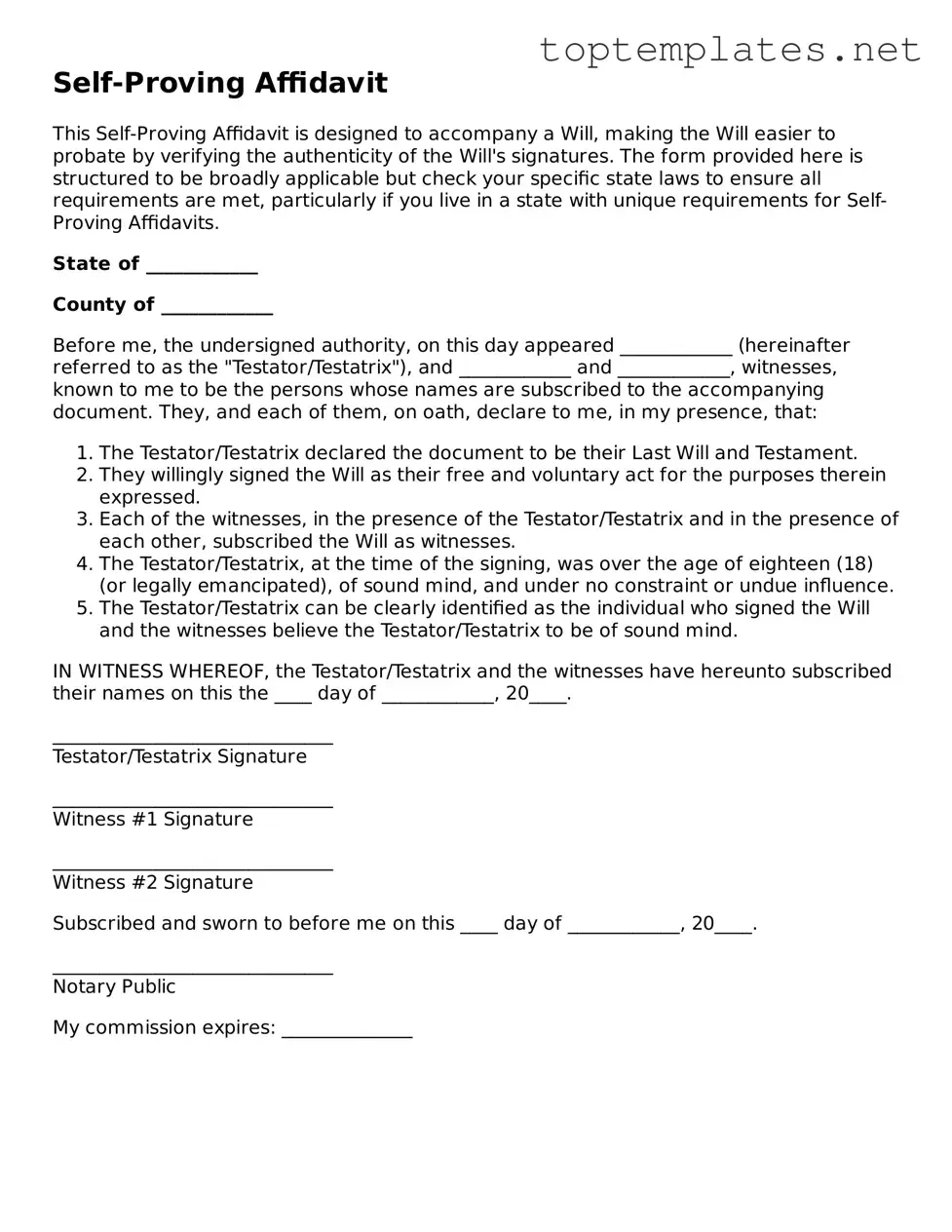Self-Proving Affidavit
This Self-Proving Affidavit is designed to accompany a Will, making the Will easier to probate by verifying the authenticity of the Will's signatures. The form provided here is structured to be broadly applicable but check your specific state laws to ensure all requirements are met, particularly if you live in a state with unique requirements for Self-Proving Affidavits.
State of ____________
County of ____________
Before me, the undersigned authority, on this day appeared ____________ (hereinafter referred to as the "Testator/Testatrix"), and ____________ and ____________, witnesses, known to me to be the persons whose names are subscribed to the accompanying document. They, and each of them, on oath, declare to me, in my presence, that:
- The Testator/Testatrix declared the document to be their Last Will and Testament.
- They willingly signed the Will as their free and voluntary act for the purposes therein expressed.
- Each of the witnesses, in the presence of the Testator/Testatrix and in the presence of each other, subscribed the Will as witnesses.
- The Testator/Testatrix, at the time of the signing, was over the age of eighteen (18) (or legally emancipated), of sound mind, and under no constraint or undue influence.
- The Testator/Testatrix can be clearly identified as the individual who signed the Will and the witnesses believe the Testator/Testatrix to be of sound mind.
IN WITNESS WHEREOF, the Testator/Testatrix and the witnesses have hereunto subscribed their names on this the ____ day of ____________, 20____.
______________________________
Testator/Testatrix Signature
______________________________
Witness #1 Signature
______________________________
Witness #2 Signature
Subscribed and sworn to before me on this ____ day of ____________, 20____.
______________________________
Notary Public
My commission expires: ______________
